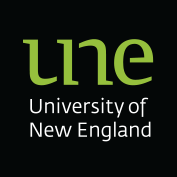Please use this identifier to cite or link to this item:
https://hdl.handle.net/1959.11/62586
| Title: | Humans Making History through Continuities and Discontinuities in Art |
Contributor(s): | Davidson, Iain (author) |
Publication Date: | 2023 |
Open Access: | Yes |
DOI: | 10.1017/S0959774323000057 |
Handle Link: | https://hdl.handle.net/1959.11/62586 |
Abstract: | | Early representational art seems to tell a story all of its own, but in reality, it depended on the oral stories that accompanied its production. The art system has four parts: the producer, the subject of the story, the images of that subject, and the seer. Through the stories of the producer and the seers, this system implicated members of society in ways that were not limited to the images produced. By tying those stories to particular places, rock art influenced society more broadly through foraging choices and ritual. Because the persisting marks of rock art necessarily required storytelling, the stories penetrated the mental lives of people in the society. Interwoven with these considerations is the observation that for archaeologists, the producer, the stories and the original seers are gone and all that is left is the material of the rock art and the archaeologist. Writing archaeohistory from these materials requires interpretation in light of the archaeological evidence distributed across both space and time. One way of interpreting archaeohistory suggests that rock art played a significant role in cognitive evolution through its engagement in ritual.
Publication Type: | Journal Article |
Source of Publication: | Cambridge Archaeological Journal, v.33, p. 637-654 |
Publisher: | Cambridge University Press |
Place of Publication: | United Kingdom |
ISSN: | 1474-0540
0959-7743 |
Fields of Research (FoR) 2020: | 4301 Archaeology |
Socio-Economic Objective (SEO) 2020: | tbd |
Peer Reviewed: | Yes |
HERDC Category Description: | C1 Refereed Article in a Scholarly Journal |
| Appears in Collections: | Journal Article
School of Humanities, Arts and Social Sciences
|
|---|
Files in This Item:
2 files
Show full item record


